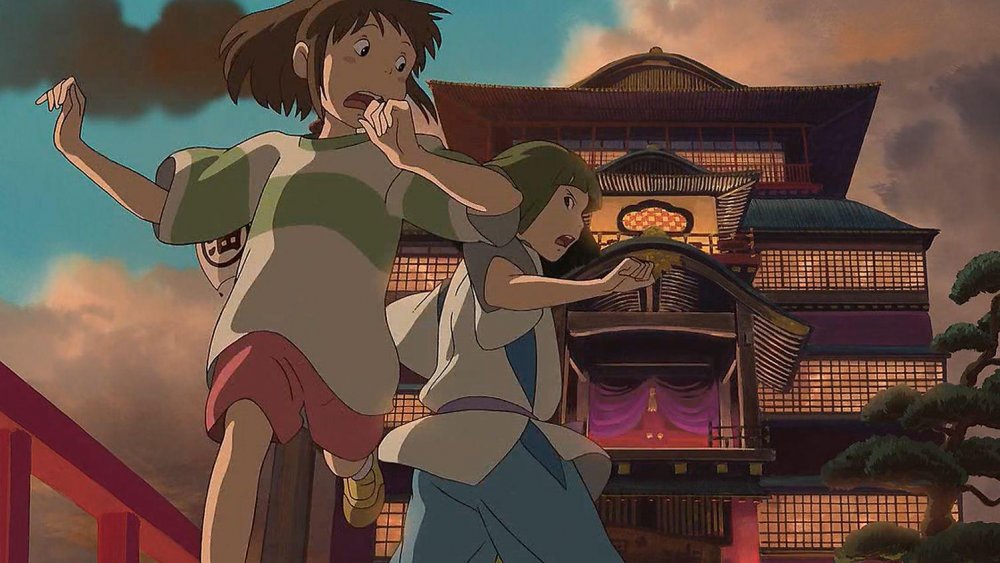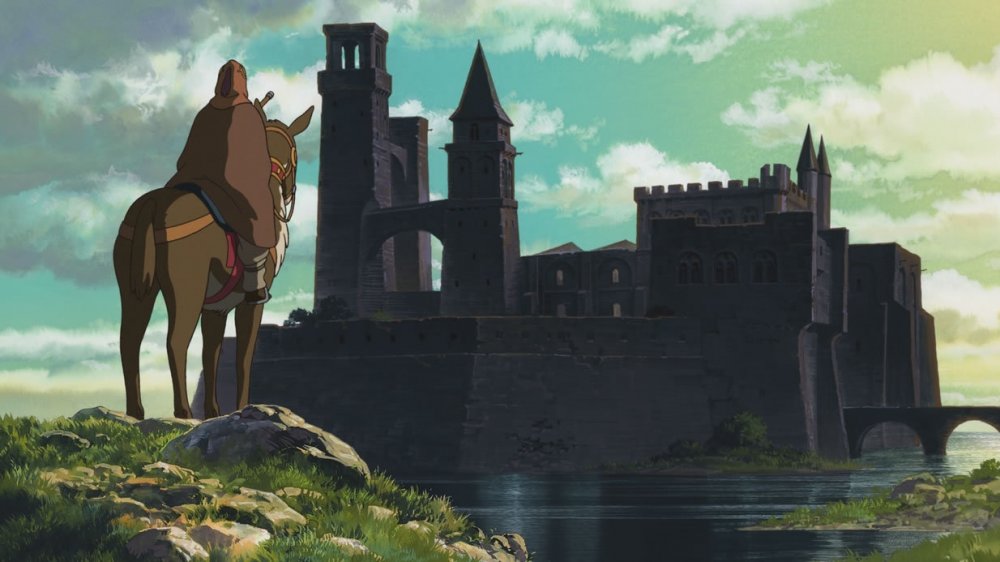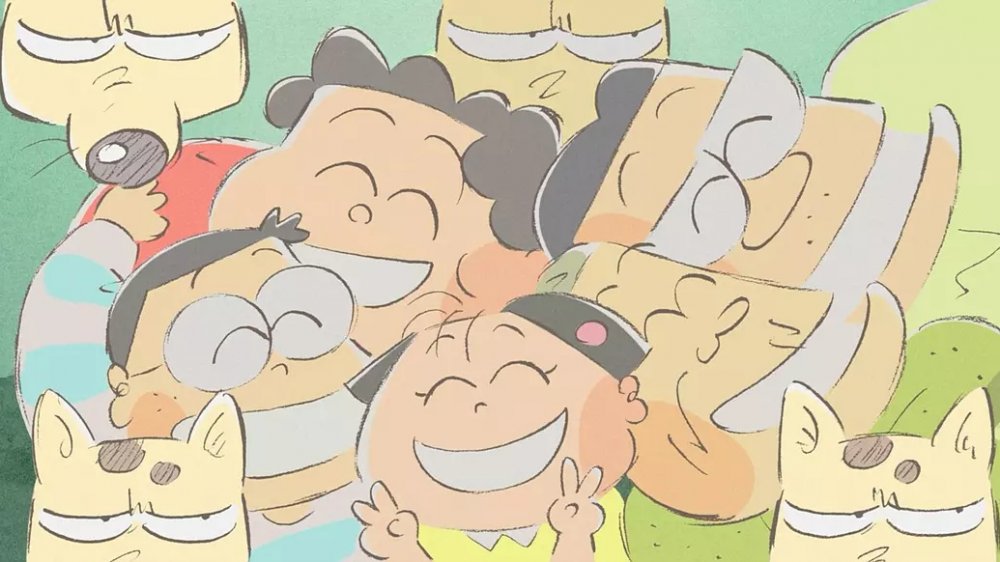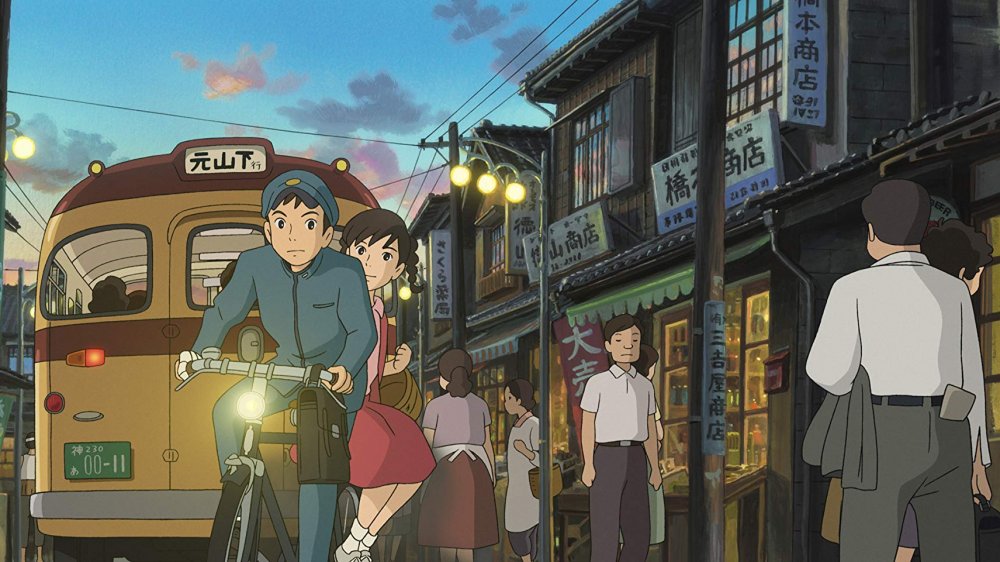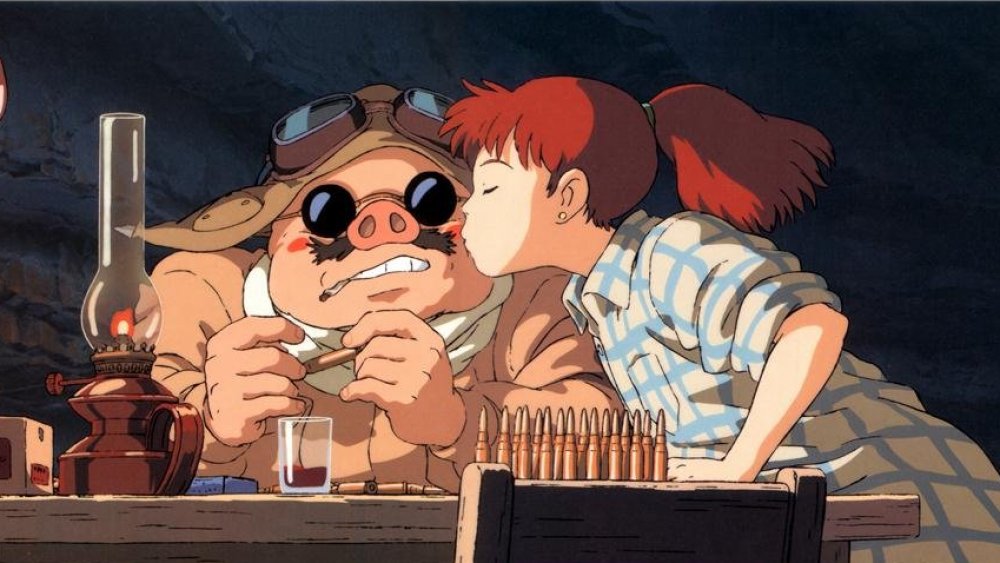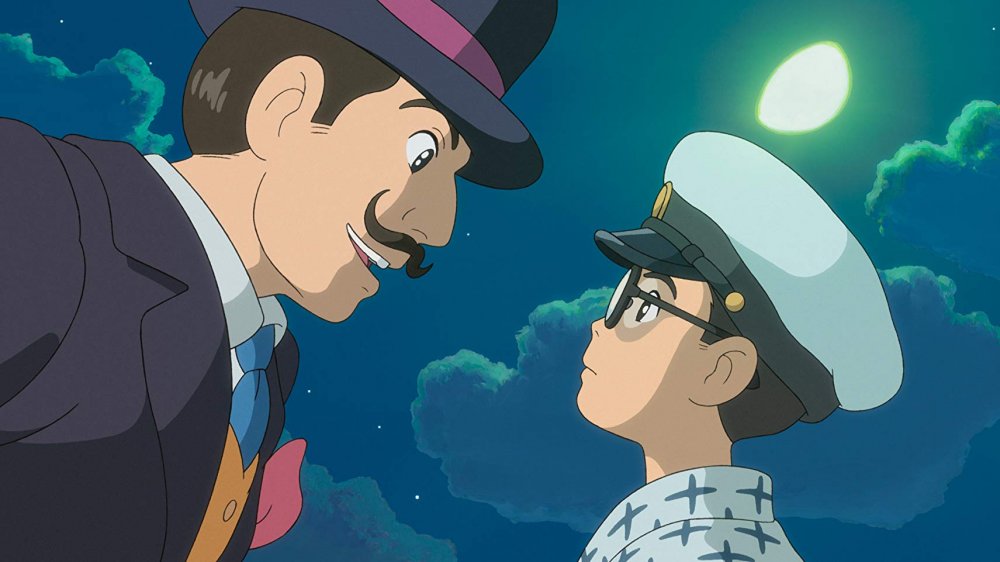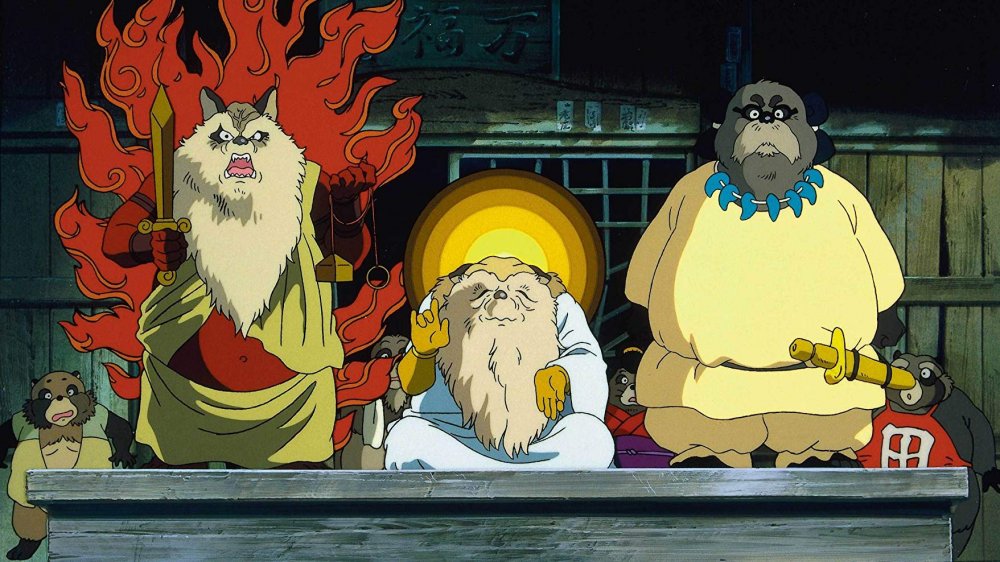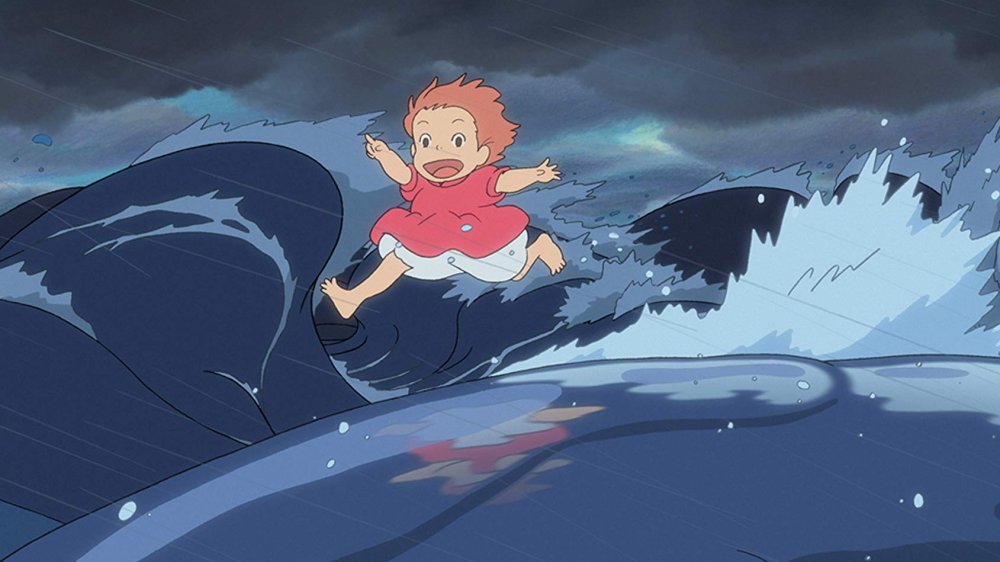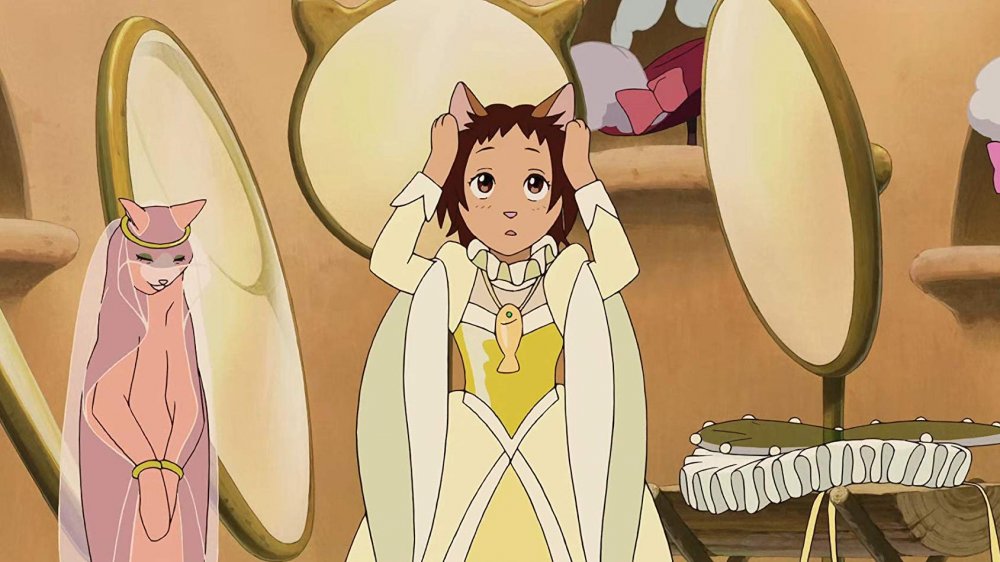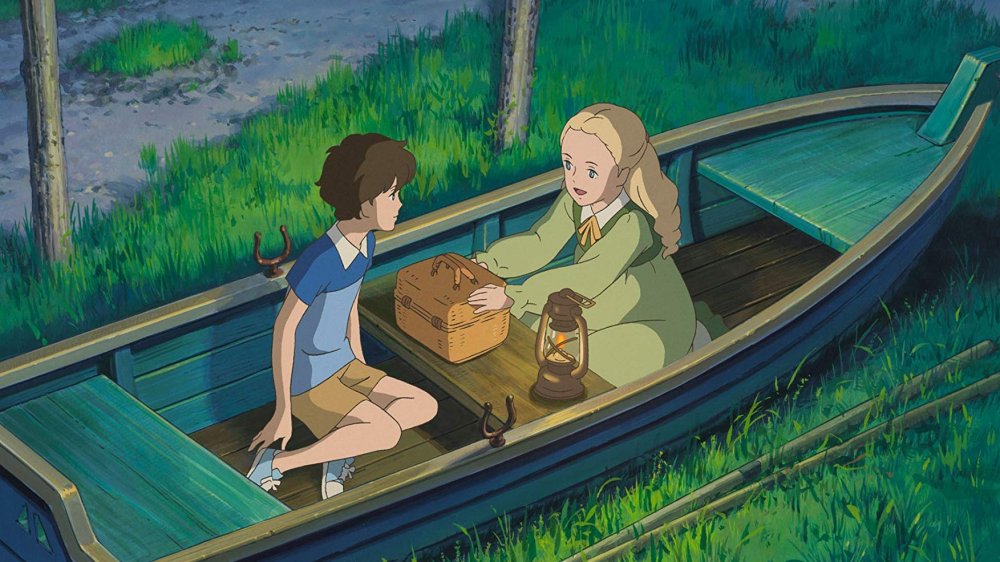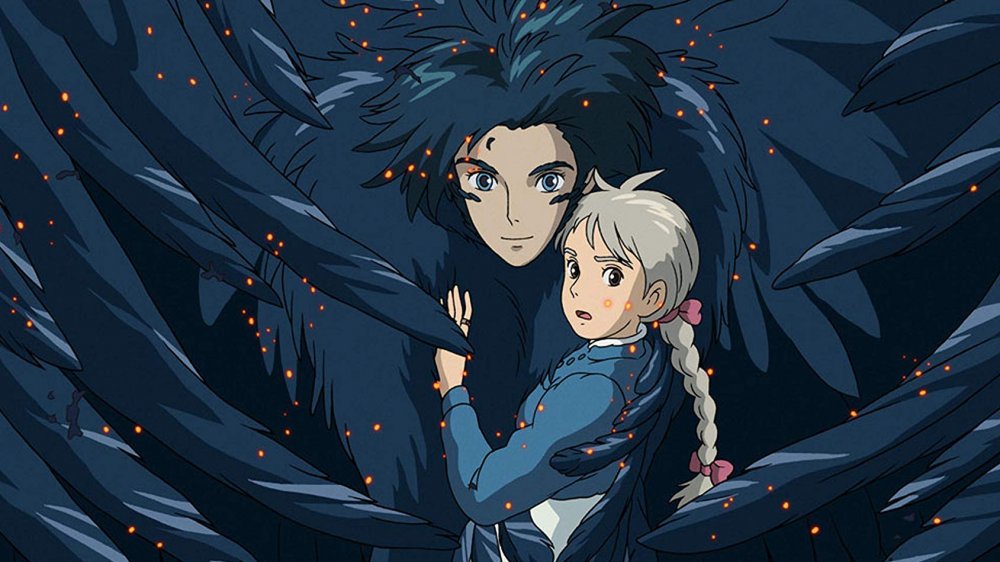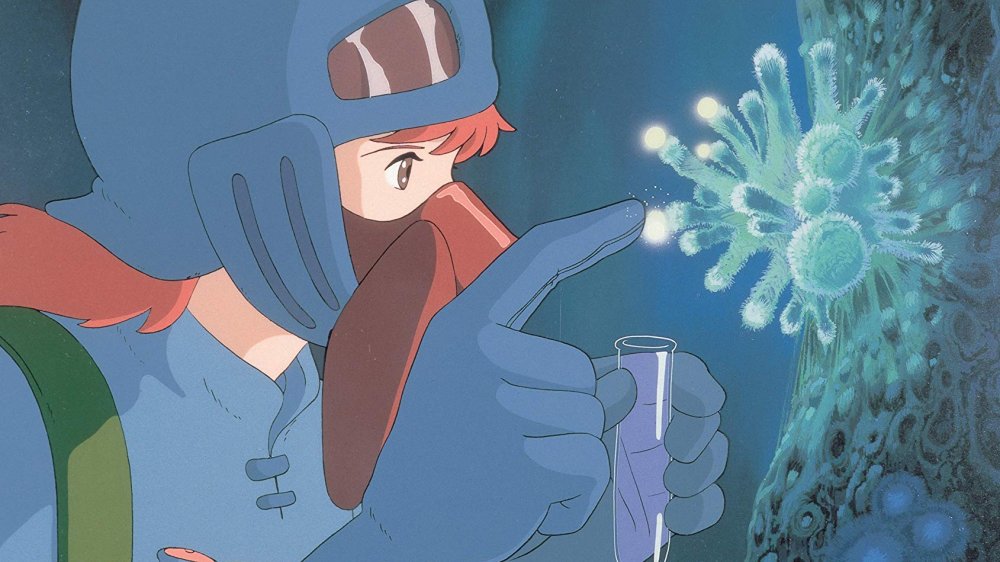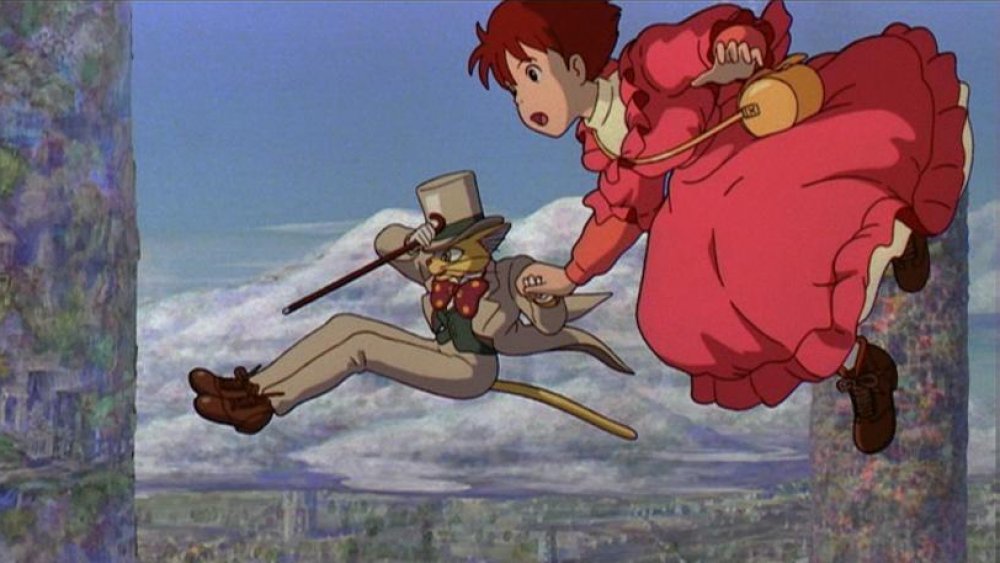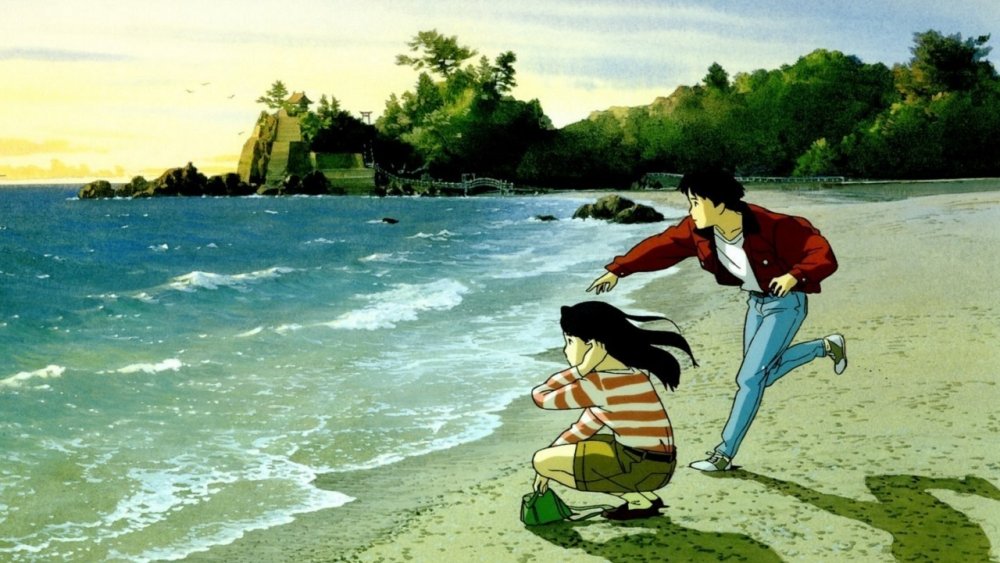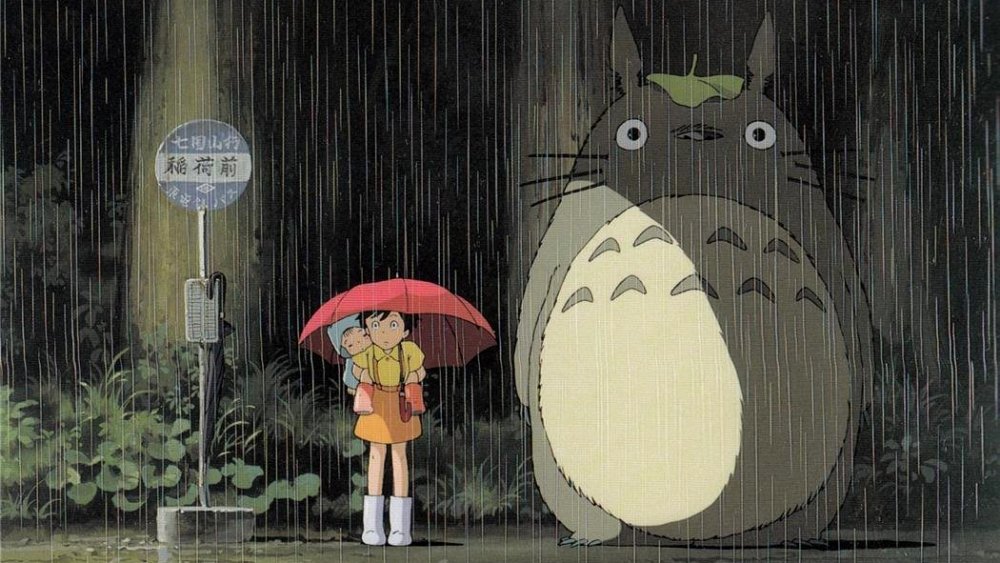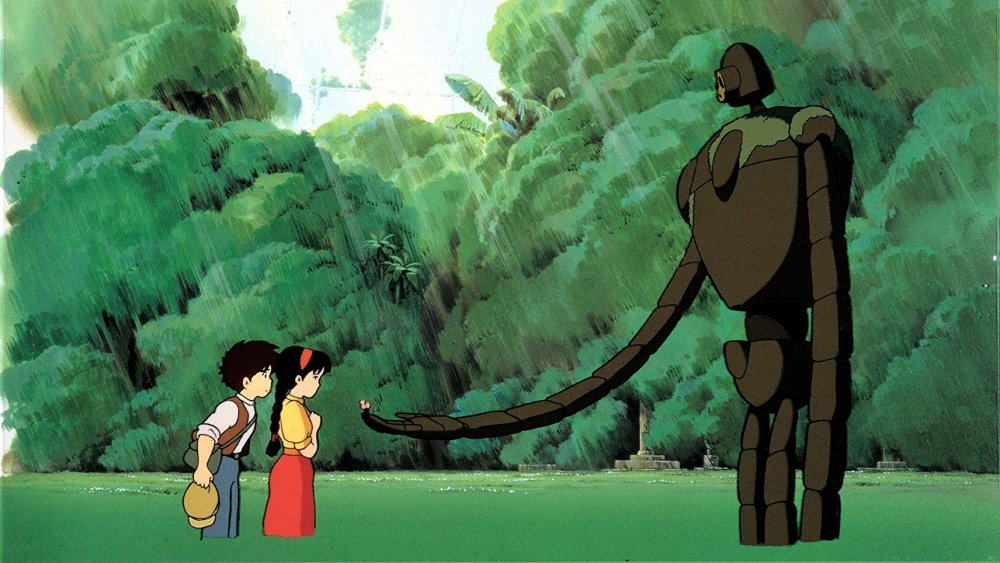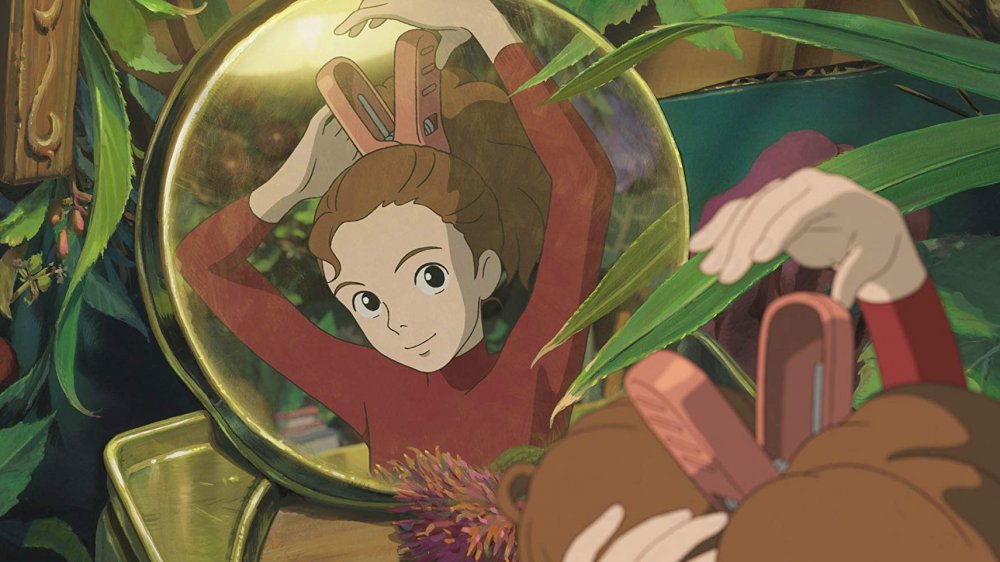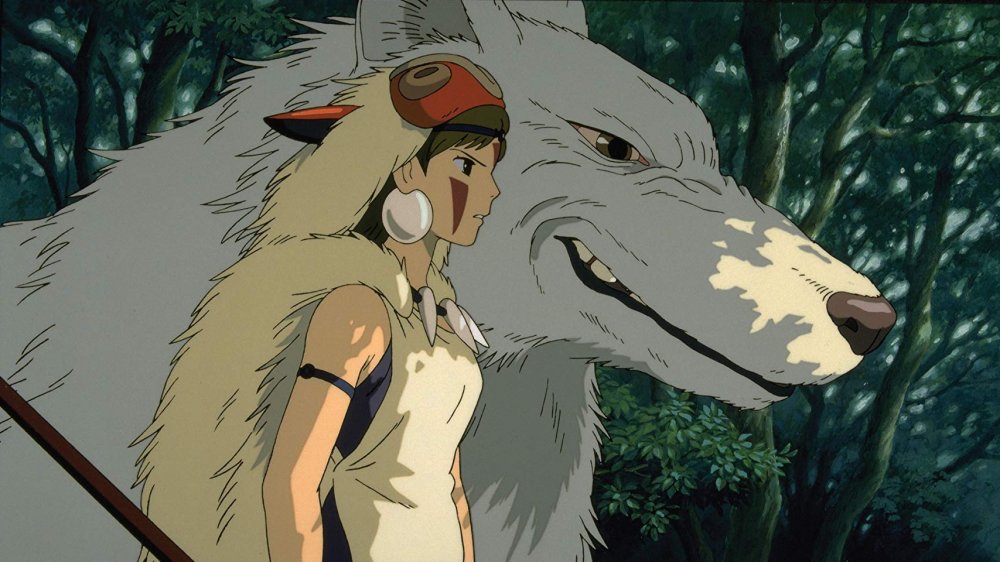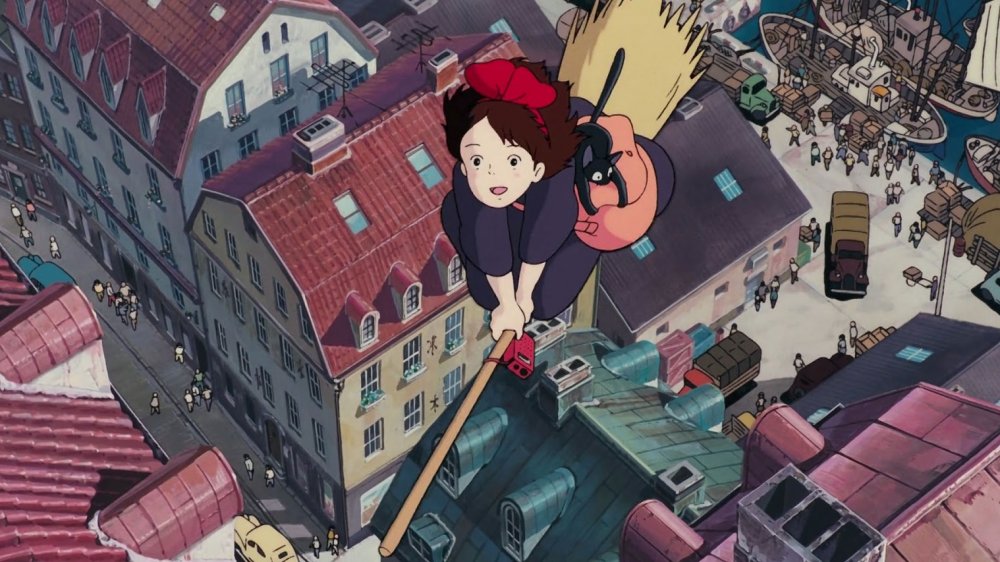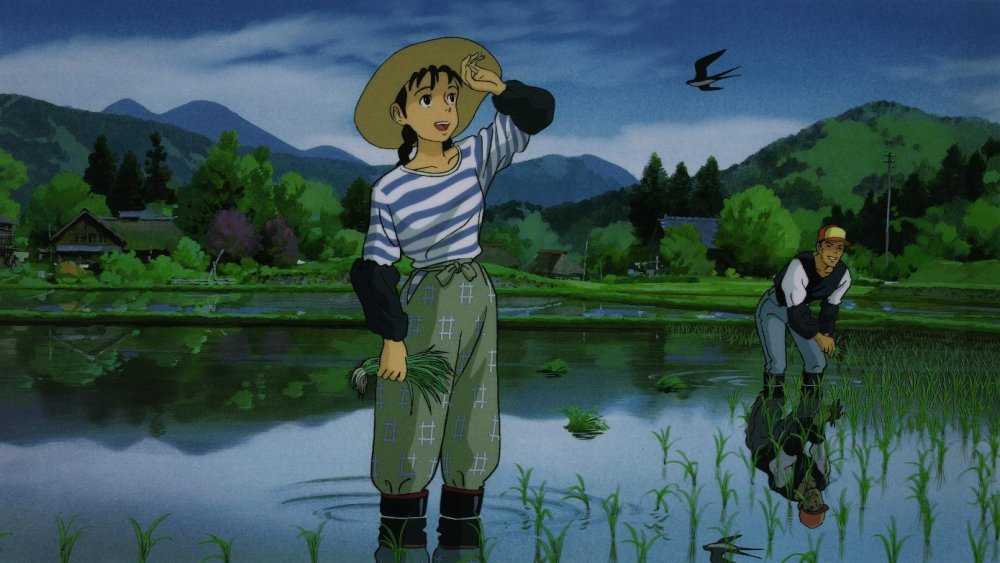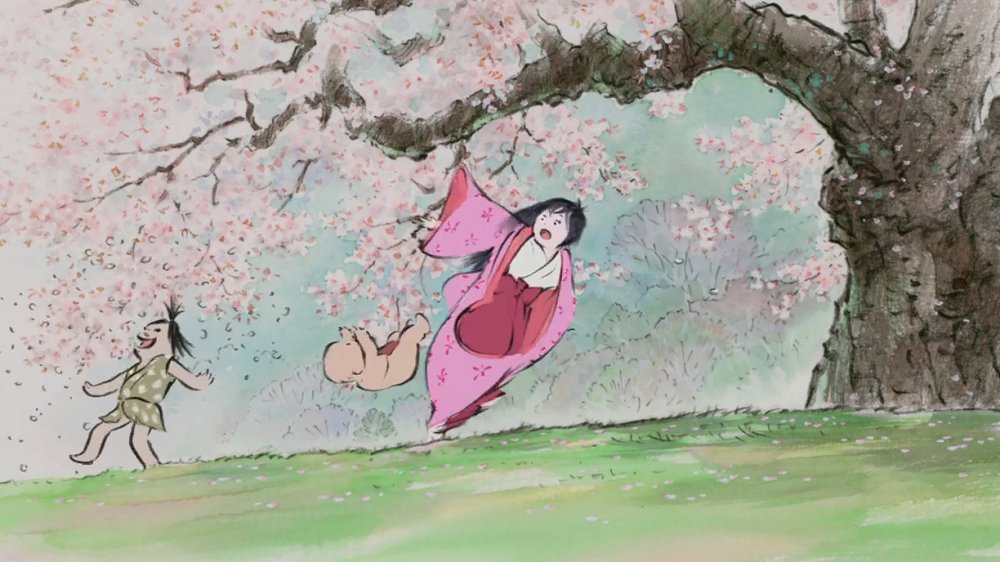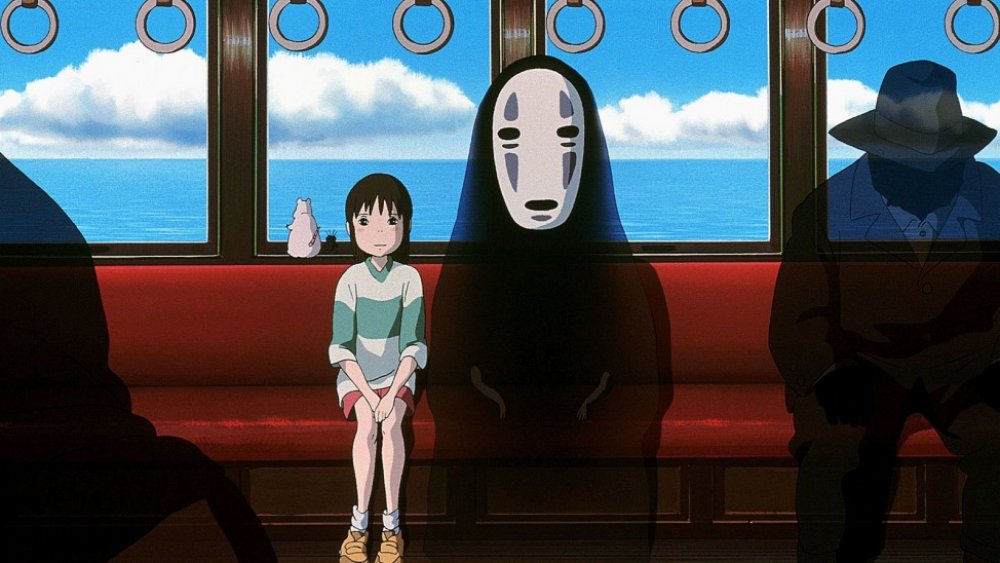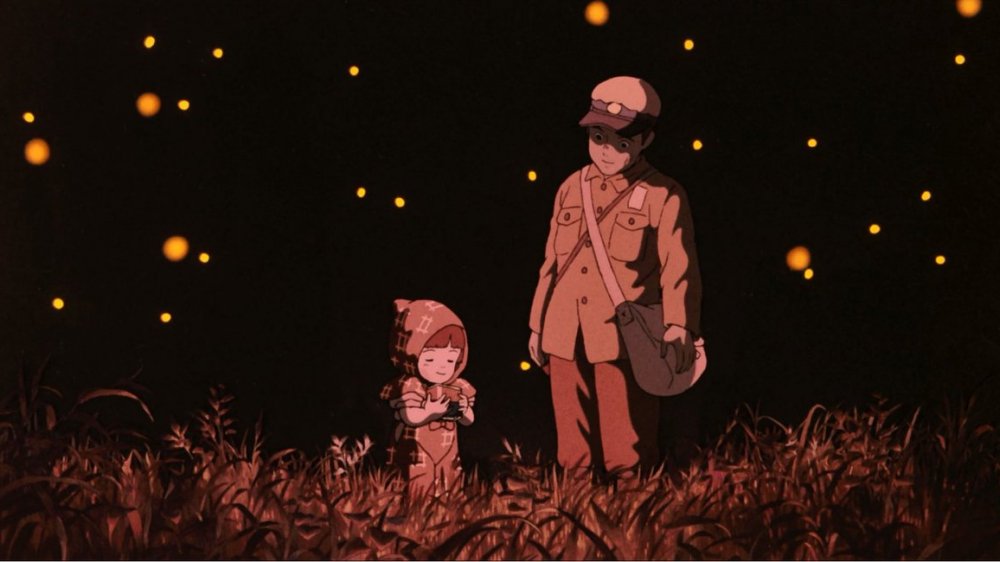Studio Ghibli Movies Ranked Worst To Best
We may receive a commission on purchases made from links.
Over the last few decades, Studio Ghibli has built itself up by using the animation medium to capture the imaginations of the masses by introducing them to fantastical worlds in its works. Founded in 1985 by Hayao Miyazaki along with three other Japanese filmmakers, the studio has made its name by producing an extensive library of animated features. The continually imaginative and visually stunning films have even earned Studio Ghibli the affectionate nickname "The Disney of Japan."
With 22 feature-length films under its belt, Studio Ghibli has something for everyone, be it a fantastical adventure, drama, or romance. With the Ghibli collection headed to HBO Max in 2020, it will be easy for fans to find their favorite titles, be it the Oscar-winning Spirited Away or the more obscure My Neighbors The Yamadas. In celebration of Studio Ghibli's vast collection of animated works, here is a ranking of all of Ghibli's feature-length films from worst to best.
Tales from Earthsea
Adapted from the Earthsea series written by Ursula K. Le Guin, Tales from Earthsea follows Prince Arren, who has exiled himself from his home country after he murders his father. Prince Arren meets up with Ged, a wandering wizard who helps him find his way in the world.
Some scenes in the film look absolutely gorgeous, such as the fight between the white and black dragons, and some shots of Hort Town and the capital city look beautiful. However, the visual quality of the film lacks consistency. The film still looks like a standard Studio Ghibli film, but it lacks the vivaciousness and sense of life that permeates other films from the famous animation studio.
In addition, the plot incorporates elements from several of the Earthsea books and suffers as a result. At times the film feels simultaneously bloated with plot points and characters while also starved of depth since there is not enough time devoted to exploring each concept. The sprawling plot and the shallow character motivations all end up making Tales from Earthsea the weakest Studio Ghibli film by far.
My Neighbors the Yamadas
My Neighbors the Yamadas is a comedy in the style of a Japanese comic strip. The film is a compilation of stories following members of the Yamada family: Takashi and Matsuko, their son Noboru, their daughter Nonoko, the grandmother Shige, and the family dog Pochi. In each segment, different issues such as disputes between the married couple and the relationships between the family members are explored. While there is tension from time to time, the family is overall very attached and devoted to each other, tying in with the film's theme of familial love.
Though My Neighbors the Yamadas is an inoffensive and entertaining watch, the film pales in comparison to other Studio Ghibli titles. It is also a bit strange, considering its vignette style of storytelling as opposed to the singular narrative found in other Studio Ghibli titles. While certainly not the most impressive entry in the Studio Ghibli library, My Neighbors the Yamadas is a cute film with comedic elements that many viewers are bound to find enjoyable.
From Up on Poppy Hill
Based on a comic published in 1980, From Up on Poppy Hill follows Umi Matsuzaki, a high school student in the port city of Yokohama. Each morning on the flag pole outside of the boarding house where she lives, Umi arises a series of signal flags in honor of her father, who died during the Korean War. She meets a boy at school who wrote about her flags in the student newspaper, and the two set about renovating the building where the school clubs are supposed to be held. The pair begin to fall for each other as they continue working on the renovation, even after the school board decides to demolish the building.
The setting is perhaps where the film shines the brightest. While the city of Yokohama is not a fantastical setting for a film, what makes its portrayal special is the attention to the time period. The story takes place in 1963 as the nation gets ready to host the 1964 Olympic Games, and the little touches help to ground the story in the time period.
Overall, From Up on Poppy Hill is a by-the-numbers coming of age romance that has a few twists and turns thrown in to spice things up. It is by no means a bad film, but the film's mundane setting and somewhat predictable plot weaken the experience.
Porco Rosso
Porco Rosso used to be an Italian fighter pilot in the First World War. However, a curse gives him the appearance of an anthropomorphic pig. After the war, Porco made it his duty to hunt down air-pirates who use their planes to wreak havoc on honest people. But when a young pirate shoots his aircraft down, Porco has to make the dangerous journey to his mechanic so he can have repairs done. All the while, Porco must avoid deadly pirates and the fascist police of Northern Italy.
Porco Rosso is a lighthearted action film that goes to great lengths to show Hayao Miyazaki's admiration of early aviation. There are a lot of shots of Porco operating his plane with the use of several levers, sticks, and pedals that highlights the film's attention to detail. While the story is relatively safe, the real draw of this film is the action during the mid-air dogfights. Though not as groundbreaking as other Studio Ghibli titles, Porco Rosso still has plenty to offer and is worth a watch.
The Wind Rises
The Wind Rises is a fictionalized biography of Jiro Horikoshi, a renowned Japanese airplane designer from the early 20th century. The film follows Jiro as he finds love in his terminally ill wife, and he finds fulfillment in designing planes. However, throughout the film, Jiro worries about the ethics surrounding his invention, since he primarily develops for the Japanese military.
Jiro grew up nearsighted, meaning he could never be a pilot. So instead, he decided that designing planes would be a better use of his passion for aviation. After trying and failing to submit a structurally sound plane to the Imperial Army, he is sent to Germany to study plane design and manufacturing. He returns to Japan and tries yet another plane design out with the Imperial Navy, only for it to be rejected like his previous attempt. Eventually, he finds success with the Mitsubishi A5M and the subsequent Mitsubishi A6M Zero.
Though the The Wind Rises centers on a prominent historical figure who many have likely never heard of, it suffers from significant pacing problems that can make the film feel dragged out. However, for history buffs and fans of aviation, The Wind Rises is likely to have more of an impact.
Pom Poko
As construction expands to the outskirts of Tokyo, the surrounding forest becomes drained of its natural resources. The tanuki, based on the raccoon dogs native to Japan, unite to stop further human expansion from destroying their forest home. Using their powers of illusion, the tanuki manage to temporarily scare off construction workers. Despite their attempts, new workers replace those that are lost, causing the tanuki to up their game.
As the threat of deforestation looms, the tanuki take desperate measures. This desperation culminates in strange scenarios such as staging elaborate hauntings to scare humans, garnering media attention, and even relying on eco-terrorism to stall construction.
Pom Poko is an environmentally conscious film that aims to highlight the plight of animals rapidly losing their lands to suburban development. It can feel a bit on the nose, however, and directly calls the viewer to action. Despite some heavy-handed themes and awkward pacing, the film has some fun, expressive animation and characters that still make Pom Poko an engaging watch.
Ponyo
Similar to The Little Mermaid, Ponyo is a cute love story about a fish-girl named Ponyo who befriends Sosuke, a human boy, when she strays away from home. Shortly after Sosuke finds the fishy girl, the two become fast friends. After Ponyo's father forcibly returns her to the sea, Ponyo protests and uses her magic to transform into a human girl. Unfortunately, her magic causes a massive tsunami leaving the two children stranded. Eager to find Sosuke's mother, the two children brave the flooded town using Ponyo's magic.
Ponyo is a genuinely beautiful film with amazingly creative designs, both in terms of world-building and characters. However, it suffers from slow pacing and an overly simple story. That being said, Ponyo isn't aiming for depth; the film wants to take viewers on a fantastical visual journey under the sea, and in that respect, it excels. Though it isn't perfect, Ponyo is more than worth watching for the gorgeous animation and cute childish romance between Sosuke and Ponyo.
The Cat Returns
After Haru Yoshioka saves the life of a cat crossing the street, her life takes a turn for the weird when the cat turns out to be the prince of Cat Kingdom and asks for her hand in marriage. Haru is uninterested in this proposal. Due to a misunderstanding, however, she is taken to the Cat Kingdom, and she slowly becomes more and more cat-like. With time running out before Haru permanently transforms into a cat, she must escape the Cat Kingdom and regain her human form.
The Cat Returns is a cute fantasy adventure that is ultimately a fun watch. Still, the film lacks the grand scope that has come to be expected from Studio Ghibli titles. Compared to the visual masterpiece of Spirited Away, which was released during the same year as The Cat Returns, the film is both lighter in tone and bit less daring in terms of animation. However, The Cat Returns is far from a failure. With a 90 percent score on Rotten Tomatoes, it's fair to say the film is definitely enjoyable and is an overall solid flick for animation fans and cat lovers alike.
When Marnie Was There
When Marnie Was There is a mystery story based on the 1967 British children's book of the same name written by Joan G. Robinson. The film follows Anna after she is sent to live with her foster parents' family in Hokkaido due to her poor health. Anna is lonely and depressed until she meets Marnie, a mysterious blond girl living in a dilapidated old house in the marshes, who she finds strangely familiar. Marnie makes Anna promise that their meetings should remain secret, and Anna is quick to accept, having just made her first real friend in the world.
When Marnie Was There's strength lies largely in the interesting female leads. Anna is particularly notable because she has trouble connecting and considers herself an outlier in her society. Given this, the relationship that develops between Anna and Marnie is incredibly sincere as it develops throughout, giving Anna someone that she can finally relate to. In the end, the great connection shared by the two leads, the mystery surrounding Marnie's character, and the film's impressive animation all come together to create a satisfying and ultimately relatable film.
Howl's Moving Castle
Based on Diana Wynne Jones's novel of the same name, Howl's Moving Castle follows Sophie, a hatmaker who is cursed by a witch. As a result of the witch's magic, Sophie is transformed into an old woman and embarks on a journey to break the spell. Along the way, she meets an enchanted scarecrow and seeks out Howl, a wizard who lives in a magical moving castle. As she tries to reverse the spell, she must brave war, the henchmen of an angry king, and even time travel.
Miyazaki's works are usually awash with commentaries on how humans interact with nature, displaying the creator's passion for taking care of the environment. However, Howl's Moving Castle focuses around themes of how humans interact and bond with each other. In conveying this theme, Howl's Moving Castle discusses complicated topics such as war, loyalty to nations, and coming to terms with one's age. The unique variety of themes combines with the standard fare of breathtaking animation, fun characters, and plenty of humor makes Howl's Moving Castle one of the most inventive Studio Ghibli films.
Nausicaä of the Valley of the Wind
The princess of the Valley of the Wind is Nausicaä, an adventurous young woman who wants her people to coexist with the neighboring Toxic Jungle and its animal and insect inhabitants. However, the peace of the Valley is put at risk when a plane from the neighboring country Tolmekia crashes in the Valley. From here, it is revealed that the cargo harbors the embryo of a Giant Warrior, an enormous and dangerous insect, that the Tolmekians are planning to use to destroy the Toxic Jungle. Everything falls to Nausicaä to find a way to restore peace to both lands and find harmony between nature and humans.
Nausicaä of the Valley of the Wind is one of Hayao Miyazaki's environmentally conscious features. Less overt than Pom Poko, it gives off a similar tone to Princess Mononoke on the often tumultuous relationship humans share with nature. Though the film was created before Studio Ghibli's existence, the success of Nausicaä is what lead to the studio's creation. Without Nausicaä, it is fair to assume we may not have gotten many of the Studio Ghibli titles that we have today.
Whisper of the Heart
In Whisper of the Heart, Shizuki is a student about to take her high school entrance exams. She soon meets young Seiji, who goes to her school, and finds out that he is a talented musician who dreams of becoming a master luthier, or violin maker. She becomes enamored with Seiji, but he announces that he is about to leave to study with a luthier for two months in Italy. During this time, Shizuki decides to similarly focus on developing her skills by devoting time to writing. This newfound dedication causes problems for Shizuki, whose grades fall as a result, and she has tough conversations with her parents about the viability of choosing a career as a writer.
Whisper of the Heart is impressive in how it tackles the creative process and the struggles of balancing creative endeavors with more traditional pursuits. Instead of chastising these creative endeavors, they are framed as something that takes skill and dedication to master and develop.
While other Studio Ghibli films may stand out for their lush environments or their tense action scenes, Whisper of the Heart's strength is the emotional journey that the Shizuki goes on throughout the film. The film is relatable and down to Earth, making Whisper of the Heart one of the more uniquely mundane films from the studio.
Ocean Waves
Initially released in 1993, Ocean Waves is a bit different from other Studio Ghibli titles in that it was produced for television, although it eventually saw a limited theatrical release in 2016. Additionally, it's the first Ghibli film not to feature Hayao Miyazaki or Isao Takahata as director.
Ocean Waves tells the story of a love triangle between Taku, his best friend Yutaka, and the new exchange student Rikaku. After Taku joins Rikaku for an unexpected trip to Tokyo, tensions rise, and rumors begin to develop about Rikaku and Taku's relationship. As a result, Rikaku, Taku, and Yutaka must confront the change in dynamics and the nature of their relationships with one another.
For a teenage love story, the overall likable Ocean Waves fits the bill. Though it may not be as strong as similar Studio Ghibli films, it's a solid drama that is still engaging and enjoyable to watch.
My Neighbor Totoro
Moving closer to where their mother is being treated in a hospital, sisters Satsuki and Mei discover a host of magical beings living in their new town. Guided by friendly dust creatures, Mei meets Totoro, a giant cat-like animal that lives in a hollow by the girl's house. Eventually, Totoro also reveals himself to Satsuki, and the sisters are introduced to the whimsical life shared by Totoro and his fantastical friends.
Though the film is mostly filled with cute critters and upbeat interactions between Satsuki and her younger sister, it also has its fair share of tension. Despite some sad moments that can easily bring a tear to one's eye, My Neighbor Totoro is wildly fun to watch and instills a sense of childlike wonder that few other films can achieve. My Neighbor Totoro has delighted fans and critics alike, and for good reason. Be it Totoro, the soot spirits, or the strange Catbus, My Neighbor Totoro film will undoubtedly leave a lasting positive impact on its viewers.
Castle in the Sky
Considering Castle in the Sky was the first film to be produced under the name Studio Ghibli in 1986, it stands the test of time incredibly well. The story begins with Sheeta, a young orphan, who is pursued by space pirates and government officials who are after her mysterious necklace. Sheeta is found and sheltered by another orphan named Pazu. The two go on a journey to uncover the secrets of Sheeta's necklace and its airborne origin, and quickly find out that it likely comes from the fabled floating city of Laputa. Pazu's father once managed to take a photo of the city while flying a plane but was shamed by his town when they decided the picture was a hoax.
Castle in the Sky does a good job of setting the tone for future Studio Ghibli films in that it has a sweeping soundtrack, a mystical world filled with advanced technology, and themes surrounding humans and their relationship to nature. All in all, it still stands tall as one of the better films in the Studio Ghibli lineup due to its strong animation, its steampunk atmosphere, and its originality.
The Secret World of Arrietty
The Secret World of Arrietty is an adaptation of the 1952 novel The Borrowers, written by English author Mary Norton. The film follows young Arrietty Clock and her family, a family of borrowers, or people who stand at about four inches tall that scavenge or borrow from the houses of ordinary humans. The family's safety is threatened when the young boy of the house, Sho, sees Arrietty as she and her father are borrowing in his room late one night.
While Studio Ghibli films are renowned for their ability to create fantastical worlds that are full of fascinating creatures and locales, The Secret World of Arrietty engenders that same sense of wonder, scope, and adventure within its utterly mundane setting. In addition to beautiful animation and excellent art design, the film is supplemented with a soundtrack that helps build on the sweet overall tone. With a blend of fantastic music and visuals, The Secret World of Arrietty is a beautiful tale of blossoming friendship that perfectly balances between a calm, slice-of-life narrative and a fun adventure story.
Princess Mononoke
In Princess Mononoke, Prince Ashitaka protects his town from a demon attack, and during the battle, he is infected with a corruption that grants him extraordinary strength, but slowly and fatally spreads through his body. In search of a cure, Ashitaka goes to Iron Town, where the people cut down the forest to fuel their manufacturing-based society. This disturbance of nature upsets the spirits of the forest, who go to war with the people of Iron Town. Ashitaka gets help from a human girl, San, who fights with the nature spirits that raised her. As the war threatens to wipe out both the nature spirits and the humans, Ashitaka and San have to work together to achieve some form of peace.
Princess Mononoke centers around man's conflicting relationship with nature in clever ways. Aside from the literal war between nature and man, the conflict is represented in the main character. The corruption that gives him strength is an interesting parallel to the industrial practices of man that give power while slowly killing the world.
Another praiseworthy aspect of the film is its portrayal of what would normally be a stock villain. The head of Iron Town, Lady Eboshi, is driven by a desire to help the disabled and sick in her town, making her an unusually nuanced antagonist. Overall, Princess Mononoke does an excellent job of blending an action-packed adventure with an environmental message that is both mature and nuanced.
Kiki's Delivery Service
In Kiki's Delivery Service, a young witch named Kiki prepares to leave her home and train as a witch in a new town. Supported by her talking black cat Jiji, she flies to a seaside town where they're hosted by a friendly baker and her husband. Quickly, Kiki finds her footing as a delivery girl and captures the attention of a boy named Tombo, who clamors for her attention. Though Kiki loves her new home, her delivery work isn't without its struggles. Eventually, Kiki faces a complete loss of confidence, resulting in her powers disappearing. The young witch must confront her self-doubt if she wants to find her niche as a successful witch and thrive in her seaside home.
Kiki's Delivery Service is a magical tale with beautiful animation that makes Kiki's world feel warm and idyllic. All of the characters are expressive and relatable, especially Kiki, who struggles to fit into her new town and discover her unique talents. Starting as over-confident and slowly becoming isolated and unsure, Kiki is a brilliantly executed character that encourages viewers to overcome obstacles and fly high.
Only Yesterday
Based on the manga by Hotaru Okamoto and Yuko Tone, Only Yesterday strays away from Studio Ghibli conventions by targeting older viewers as opposed to teens and children. The film explores the life of Taeko Okajima, an unmarried woman who takes a trip outside of Tokyo to the rural countryside. Outside the city, Taeko begins to feel nostalgia for her childhood and questions her life choices and her sense of self-identity.
Because of Only Yesterday's focus on an adult protagonist and her growing disillusionment with her life, the film offers a mature and reflective exploration of Taeko's character. Unlike other Ghibli titles, there aren't formalistic elements or magical adventures. Instead, the story of Only Yesterday offers a slice of life experience that is grounded in reality and more interested in exploring the main character than fantastical adventures. Ultimately, the film does an excellent job of fleshing out Taeko's memories and allows her to come to terms with who she is and what she wants out of life.
While magical creatures may be absent from this Studio Ghibli title, Only Yesterday still manages to have a unique charm and relays a beautiful story of growth, reflection, and self-discovery. With a 100 percent critic score on Rotten Tomatoes, Only Yesterday is a brilliant piece of animation and one of Studio Ghibli's best.
The Tale of the Princess Kaguya
With a distinct watercolor aesthetic, The Tale of the Princess Kaguya is a beautifully animated piece based on the Japanese folklore titled The Tale of The Bamboo Cutter. In the film, a bamboo cutter finds a girl inside a bamboo shoot, whom he names Kaguya. Realizing that the girl is divine, he moves Kaguya to a mansion in the capital where she is trained to become a noble lady.
Despite an array of suitors and a life of luxury, Princess Kaguya feels stifled by her royal life. She misses her simple existence before moving and her old friends outside the capital. Despite Kaguya's divinity, she wants to live life to the fullest instead of being a spectacle stripped of freedom by the royal lifestyle.
The Tale of the Princess Kaguya is without a doubt one of Studio Ghibli's most visually unique works, resulting in a well-deserved 100 percent critic score on Rotten Tomatoes. The film's distinct animation and style results in a uniquely pleasant experience that helps solidify The Tale of the Princess Kaguya as one of Studio Ghibli's strongest entries.
Spirited Away
Arguably the most well-known of the Studio Ghibli films, Spirited Away follows Chihiro as she works to save her parents, who unknowingly trespassed into the world of spirits. As punishment for stealing food, Chihiro's parents are transformed into pigs by the powerful witch Yubaba. In the process of saving her family, Chihiro finds work in a bathhouse, but as part of her employment, she signs a contract that makes her forfeit her name in favor of a new one, Sen. Throughout her journey working in the bathhouse and helping patrons and coworkers, Chihiro learns determination, how to assert herself, and the value of compassion.
Spirited Away is absolutely gorgeous and perfectly captures the otherworldly atmosphere through masterful animation and character designs. The fantastic visuals, accompanied by the film's colorful cast of creative, lovable characters, solidifies Spirited Away as one of the most beloved animated films of all time.
Grave of the Fireflies
Taking place in Japan during World War II, Grave of the Fireflies follows Seita and his sister Setsuko who survive a firebombing that destroys their home. Because their mother is killed in the fire, Seita is now responsible for his younger sister's well-being. Thrust into the role of a parent, Seita must find a way to feed himself and his sister in the midst of rapidly shrinking rations.
Grave of the Fireflies is unique in that it reveals the main character's deaths at the beginning of the film. The remainder of the runtime is told through a flashback that contextualizes Seita's death and the hardships he was forced to endure. Ultimately, the film is a grim and heartbreaking experience that bears far more weight than any other Studio Ghibli movie.
While Grave of the Fireflies may prove too difficult for some viewers to endure, the film's themes surrounding the tragedy of war are brilliantly executed. In the end, Seita and Setsuko are innocent children whose lives are destroyed by a war they had no say in and are left alone to face the consequences. In a post-war society, no one can provide for these children, forcing Seita into an adult role he is largely unprepared to handle.
